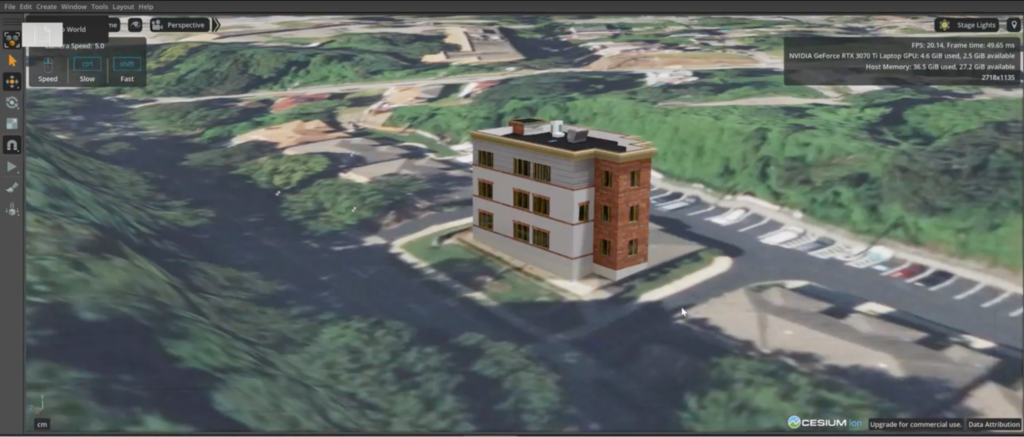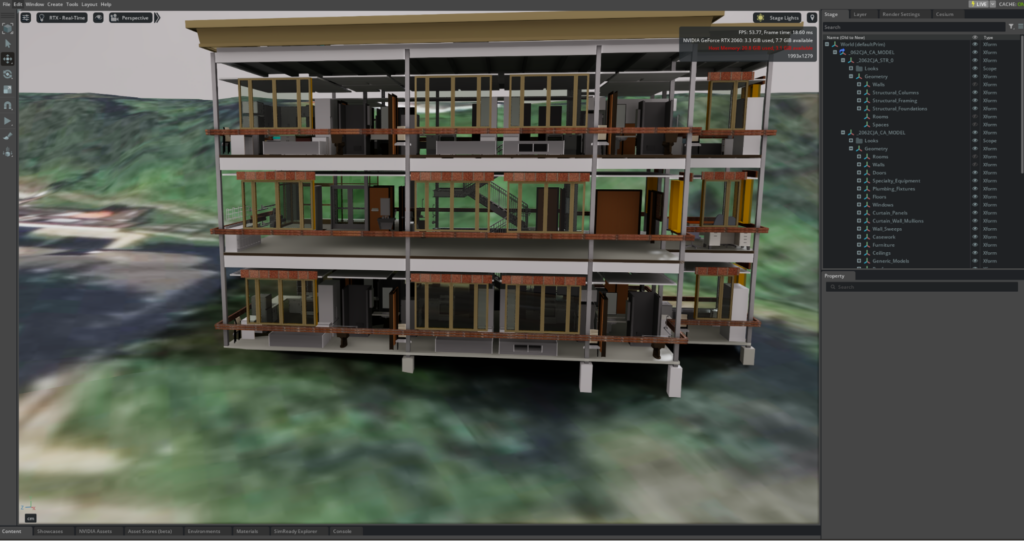UrsaLeo Builds Facility Life Cycle Management Tools with Cesium for Omniverse
To modernize and manage facilities during architecture, engineering, construction, and operation (AECO), UrsaLeo builds custom digital twins and visualizes them in combination with Cesium for Omniverse.
UrsaLeo, based in San Francisco, serves AECO customers, particularly in the IoT and smart building realms. UrsaLeo’s digital twins foster collaboration among stakeholders at all phases of a facility’s life cycle. With Cesium and NVIDIA technology, the firm aggregates multiple 3D and 2D datasets for each project, easing the burden on architects, contractors, and building operators using siloed and potentially outdated versions of plans.
Veterans Place aids veterans in Pittsburgh, Pennsylvania, with transitional housing, workforce development, and other resources. For the organization’s new building, UrsaLeo took advantage of the NVIDIA Omniverse development platform and Universal Scene Description (OpenUSD), the highly extensible format created by Pixar Animation Studios. With these capabilities, they were able to build custom tools and workflows that allowed them to quickly and easily combine CAD files from the facility’s architect and engineering company to create a digital twin of the proposed new facility. As designs and documents are updated, the digital twin will sync and reflect the most current information. This “living” 3D model is hosted on NVIDIA’s Graphics Delivery Network (GDN) so it can be streamed to customers in a web browser. GDN, which is part of NVIDIA Omniverse Cloud, is a global network of data centers featuring the latest NVIDIA GPUs, intended for streaming very high-resolution experiences without hardware performance requirements for end users. UrsaLeo reports it is the first company to use GDN for the deployment of digital twins.
The Cesium for Omniverse extension enables UrsaLeo to present the veterans building and other facilities in an accurate geospatial context, making use of Cesium World Terrain, Bing Maps Aerial imagery, and Cesium OSM Buildings via Cesium ion. Real-world surroundings ensure stakeholders get the full picture.

While UrsaLeo employs these techniques for all the facilities that it models, every instance is custom, as the CAD files, resulting digital twin, and surroundings are specific to each project. The firm is incorporating a measurement tool for distances and angles; a markup tool for adding text and drawings; a document management system for equipment manuals; BIM data retrieval; real-time data from sensor systems used during construction and operation; and energy usage alerts, among other building-specific information useful to building occupants or maintenance providers.
“Combining Cesium’s geospatial data with the architectural designs of yet-to-be-built facilities allows us to provide the end user a real experience of what the facility will look like when constructed. All of a sudden they can see their new facility in situ in a way that’s never been possible before. A transformative technology,” said John Burton, CEO of UrsaLeo.

Modern AECO requires collaboration on the ground and in the cloud. Follow our tutorials to learn how to add geospatial data to your NVIDIA Omniverse applications.


